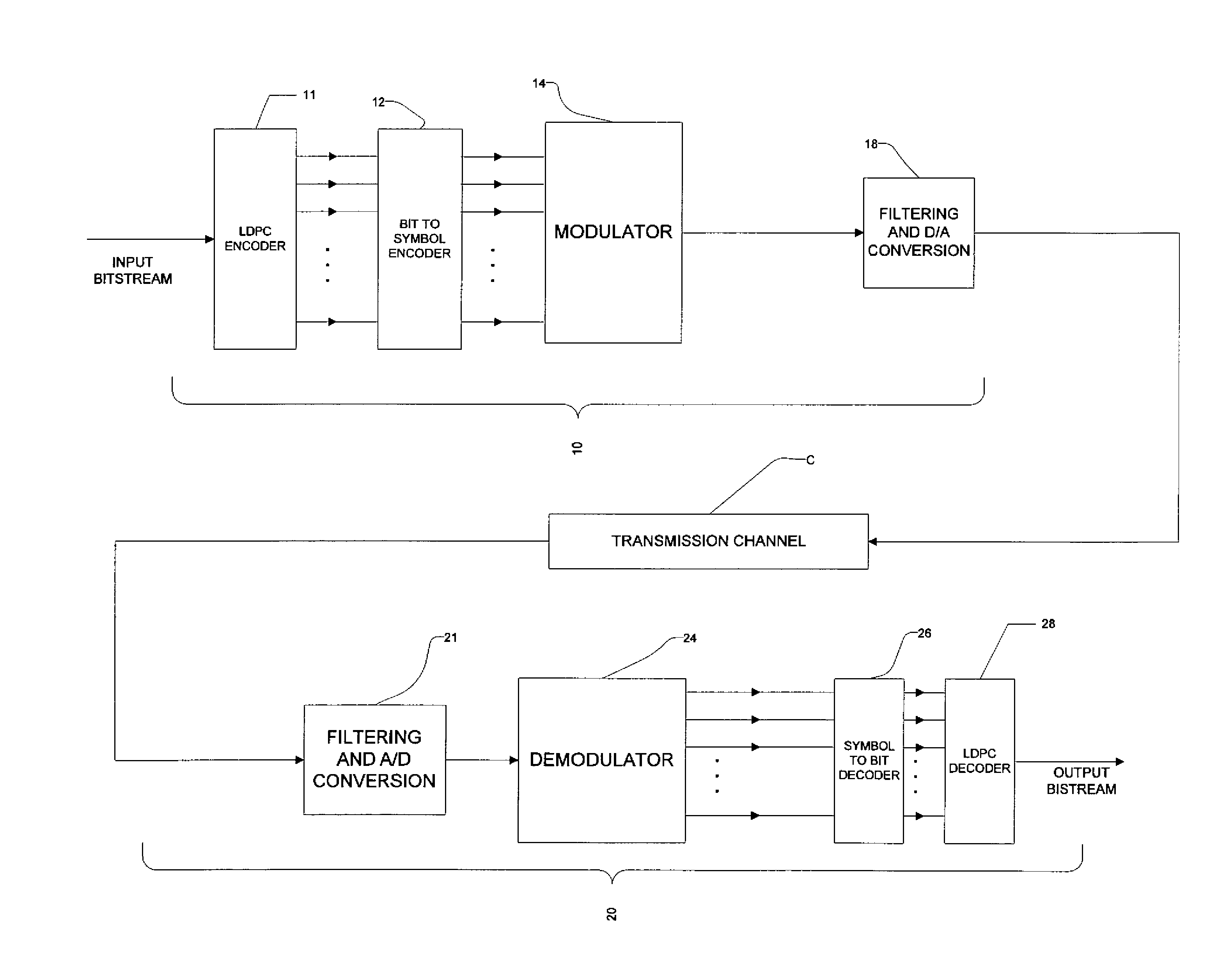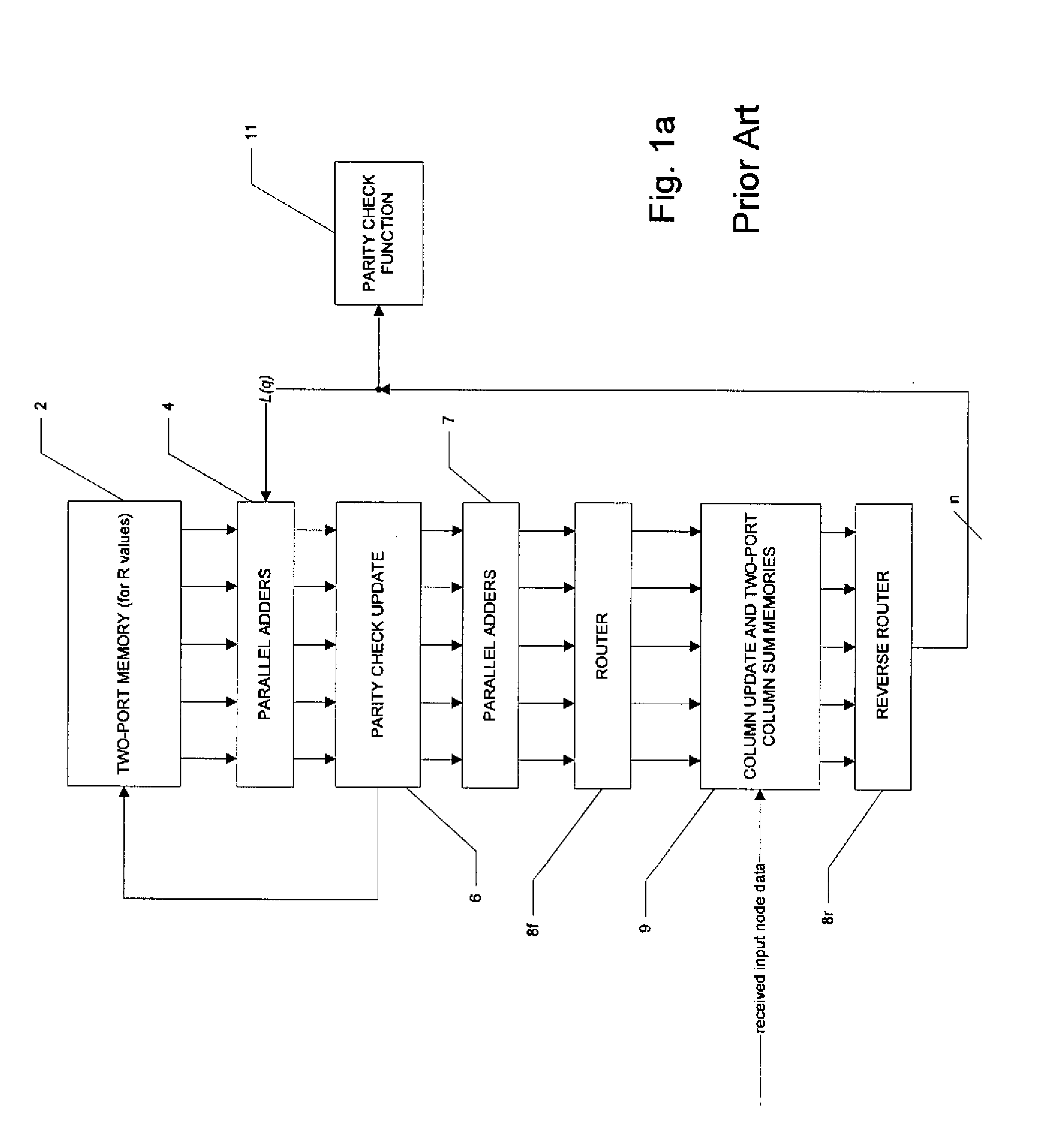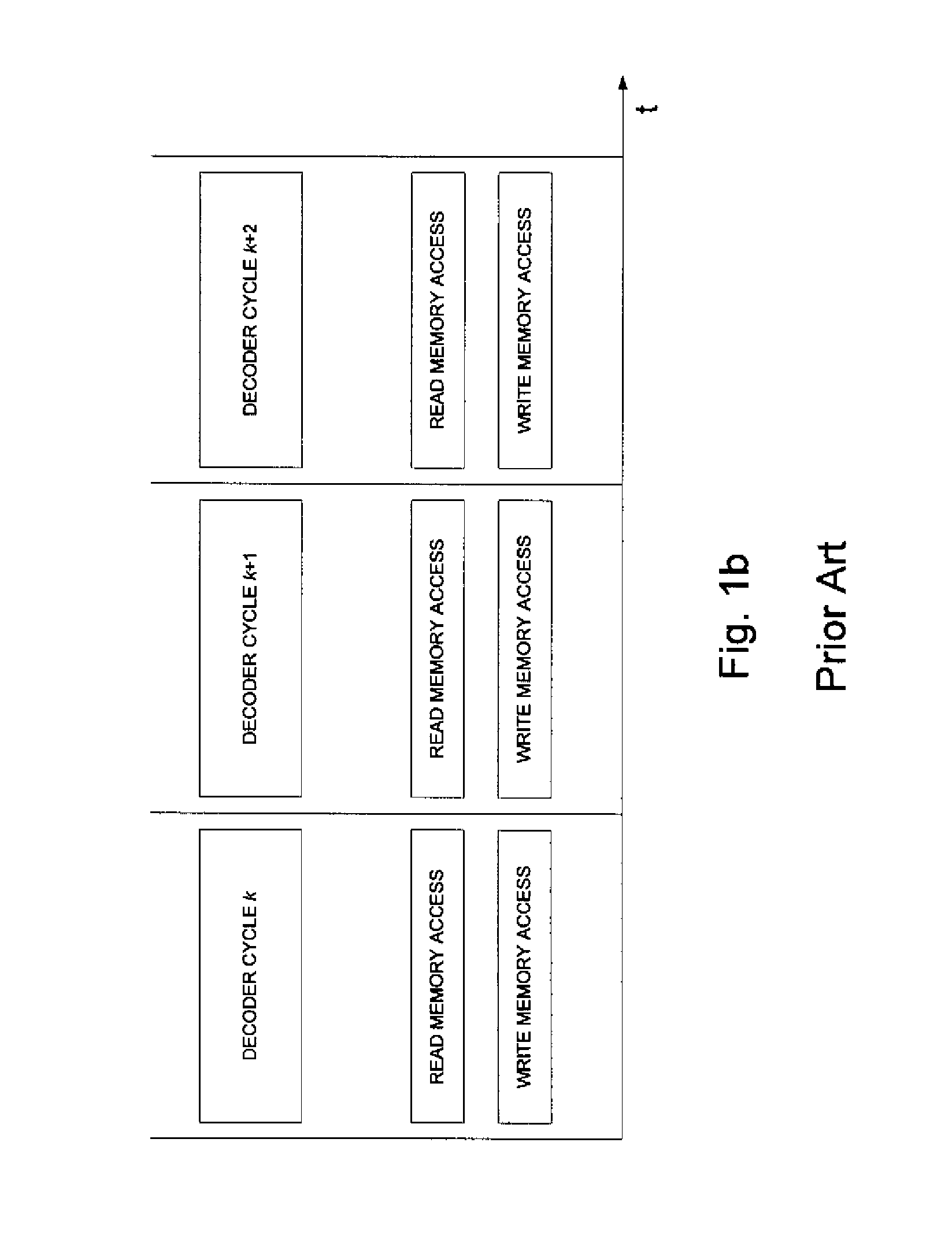Memory Access in Low-Density Parity Check Decoders
a parity check and decoder technology, applied in the direction of coding, code conversion, instruments, etc., can solve the problems of erroneous majority vote, data corruption by noise, and the likelihood of error in data communication must be considered, so as to improve the chip area efficiency and improve the decoding performance. the effect of high performan
- Summary
- Abstract
- Description
- Claims
- Application Information
AI Technical Summary
Benefits of technology
Problems solved by technology
Method used
Image
Examples
Embodiment Construction
[0049]The present invention will be described in connection with its preferred embodiment, namely as implemented into decoder circuitry applying a Low Density Parity Check (LDPC) error detection and correction code, because it is contemplated that this invention will be especially beneficial when used in such an application. However, it is contemplated that this invention can be used to great benefit in other applications, particularly in decoders operating according to other belief propagation or similarly iterative techniques, such as turbo decoding. Accordingly, it is to be understood that the following description is provided by way of example only, and is not intended to limit the true scope of this invention as claimed.
[0050]FIG. 2 functionally illustrates an example of a somewhat generalized communication system into which the preferred embodiment of the invention is implemented, for purposes only of providing context to embodiments of the invention. The illustrated system is...
PUM
 Login to View More
Login to View More Abstract
Description
Claims
Application Information
 Login to View More
Login to View More - R&D
- Intellectual Property
- Life Sciences
- Materials
- Tech Scout
- Unparalleled Data Quality
- Higher Quality Content
- 60% Fewer Hallucinations
Browse by: Latest US Patents, China's latest patents, Technical Efficacy Thesaurus, Application Domain, Technology Topic, Popular Technical Reports.
© 2025 PatSnap. All rights reserved.Legal|Privacy policy|Modern Slavery Act Transparency Statement|Sitemap|About US| Contact US: help@patsnap.com



